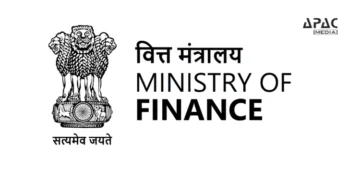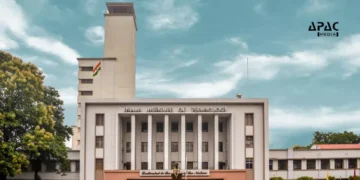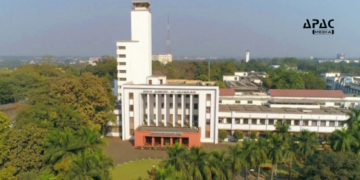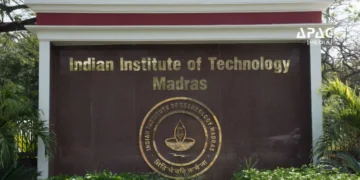New Delhi: What happened with Air India AI 171 Flight in Ahmedabad on 12 June that led to the deadliest aviation tragedy in the country’s recent history? Aircraft Accident Investigation Bureau (AAIB) in its preliminary report has revealed that both engines lost thrust within seconds of takeoff due to a mysterious mid-air transition of their fuel control switches from RUN to CUTOFF, effectively starving the engines of fuel and leading to a complete power loss.
The aircraft, Boeing 787-8, operating from Ahmedabad to London Gatwick, took off at 13:39 IST on 12 June. The aircraft achieved a maximum airspeed of 180 knots indicated airspeed at 08:08:42 UTC, shortly after liftoff.
At that precise moment, Engine One’s fuel cutoff switch transitioned from RUN to CUTOFF, followed by Engine Two’s switch doing the same just one second later, according to the aircraft’s Enhanced Airborne Flight Recorder (EAFR) data.

The report clearly stated the fact that the downloaded flight data contained approximately 49 hours of flight data and six flights, including the event flight.
This back-to-back activation caused the N1 and N2 rotor speeds of both engines to begin decreasing, indicating an immediate halt in combustion due to fuel starvation.
Cockpit voice recordings captured one pilot asking the other why did he cutoff, while in response, the other pilot said that he did not do so.
This exchange inside the cockpit suggests that neither pilot intentionally triggered the fuel cutoff, raising critical questions about system integrity or inadvertent activation.
Further Findings
With both GEnx-1B engines losing power, the aircraft’s Ram Air Turbine (RAT) was deployed by 08:08:47 UTC to supply emergency hydraulic power. At that point, the aircraft had just lifted off and was still within the airport perimeter, beginning to descend rapidly.

Desperate efforts to regain control followed. At 08:08:52 UTC, Engine One’s fuel cutoff switch was returned to the RUN position and Engine Two’s switch followed at 08:08:56 UTC.
These incidents triggered the FADEC (Full Authority Digital Engine Control) systems on both engines to initiate an automatic relight and thrust recovery sequence.
Initial indications of Exhaust Gas Temperature (EGT) rise showed that both engines began relighting. Engine One’s core speed (N2) stabilised and showed signs of recovery. However, Engine Two’s core speed continued to drop, with repeated but unsuccessful fuel reintroductions to regain acceleration.
The EAFR recording ended at 08:09:11 UTC, by which time the aircraft was no longer in control.
A “MAYDAY MAYDAY MAYDAY” distress call was transmitted at 08:09:05 UTC, but the aircraft crashed into the BJ Medical College hostel area.
Mass Casualties and Fire Damage
The crash led to fatal injuries to 229 passengers, 12 crew members and 19 civilians on the ground. Additionally, 68 others were injured, including one passenger of the aircraft.
The aircraft broke apart upon impact, destroying five buildings and causing significant fire damage. Wreckage was strewn over a 1000 ft × 400 ft area, with debris including wings, engines and fuselage components scattered across several structures.
Review Underway
The AAIB, along with the US NTSB, Boeing, GE and other global agencies, continues to examine all angles related to the Air India AI 171 crash.
Investigators are now analysing minute-by-minute data, system logic and potential electro-mechanical or software faults that could have led to an unexplained and simultaneous dual fuel cutoff during a critical phase of flight.
The current findings, while preliminary, raise urgent questions about component design, crew interface and safeguard mechanisms in modern commercial jets.
However, the final report will determine whether any systemic design flaws, procedural lapses, or rare coincidences triggered this catastrophic sequence.

































































Discussion about this post